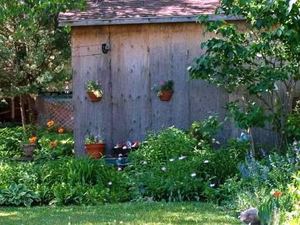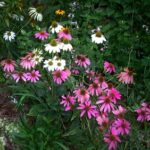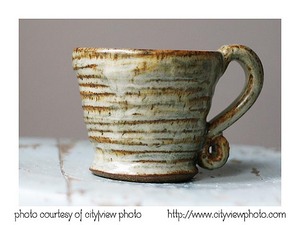A cottage garden is often viewed as a sunny location, filled with annual flowers, perennial flowers, shrubs, vines or herbs. What about shaded landscapes? I am in the process of expanding my cottage garden. Half of my yard is in sun and half the yard is in full shade to partial shade. I need to come up with a landscape design plan that includes shade-loving plants, preferably plants that bloom, to continue my cottage garden design into the shade.
Shaded cottage garden design
Colorful flowers are a big part of country cottage garden design. However, color is also achieved with variegated foliage or with the careful placement of garden objects. Garden objects may include lawn ornaments like a gazing ball, bird bath, decorative metal object like a rusty vintage piece, or a bench. I particularly enjoy using garden objects because I can move them to different locations in the garden to bring focus on the season’s best foliage.
For a garden in front of a wall or fence, follow basic landscape design and place tall plants in the rear, short plants in the front and medium height plants in the center. For a garden island or peninsula (garden mostly or completed surrounded by grass, structure or pavement), place taller plants in the center and modicum/short plants along the border. For visual impact, set plants in groupings of three to five plants. Listed below are plant options from which to choose.
Tall shade plants: 2 to 4 feet tall
Cardinal flower produces red blooms and is cold hardy in USDA planting zones 2 through 9. Astilbe, also known as false spirea or false goat’s beard, is cold hardy in USDA zones 3 through 8. Monkshood, for USDA planting zones 3 through 7, produces violet colored blooms in late summer to early fall. Shrubs, like hydrangea for USDA zones 6 through 9, and vines, like climbing hydrangea for USDA zones 4 through 7, are also seen cottage garden design.
Mid-height shade plants: 1 to 2 feet tall
Grow Japanese painted ferns in USDA zones 3 through 7. Bleeding heart blooms in early spring in USDA zones 3 through 8. Lilyleaf ladybell, for USDA zones 4 through 9, produces lavender color blooms in the summer. Review varieties of hosta to choose those with variegated leaves, like ‘Frances William’ with blue green leaves for USDA zones 3 through 8, to add color to shade garden.
Short shade plants: up to 12 inches tall
Crested iries, with blooms of blue and yellow, grows in USDA zones 3 through 8. Lily of the valley, with its highly fragrant bell-shaped white blooms, is cold hardy in USDA planting zones 4 through 8. A short, filler plant option is a decorative grass like sedge for USDA zones 5 through 8.
Sources. Aggie Horticulture, Texas AgriLife Extension Service, Texas A&M; System; Search Plants, Dave’s Garden; Plant Hardiness Zone Map, United States Department of Agriculture Research Service




